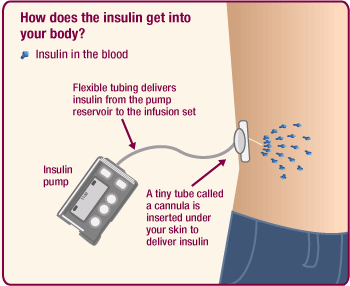Insulin pumps, as a continuous source of insulin for diabetes mellitus patients, are gradually becoming popular. The positive feedback that the product is receiving from the users stems from multiple factors. It brings convenience as it obviates the need for patients to use syringes or the insulin pen to manage the insulin levels and consequently the blood sugar levels in the body. Furthermore, the continuous inflow of insulin, in measured amounts, is akin to the hormone being produced by the pancreas, sensing the requirements of the body. This allows for easier glucose assimilation or absorption in the cells. Before using the device there are certain issues that the patients must consider.

Things to watch out for
1. Consult your physician prior to use. Acquaint yourself with the device controls and usage lest it cause inconvenience to you in the later stages.
2. Avail the services on offer in various hospitals to help patients get accustomed to the use of insulin pumps.
3. Get a clear estimate of the costs involved in regular usage. The cost of the reservoir and the disposable tubes forms a chunk of the expenditure. Understand the difference in costs and the attendant convenience for the diabetic patients.
4. Consider the pumps that work in sync with glucose level measurement sensors. The more advanced versions being introduced now segregate the controls portion from the insulin reservoir. Wireless interaction takes place with the reservoir through a control system, the size of a cellphone, that may be kept nearly two meters away.
DIY steps
How it works
1. Three components constitute the basic structure of the insulin pump. The controls structure, the disposable insulin reservoir and the disposable tubing system composed of the connecting tube, the catheter and the plastic needle termed as the cannula, which is inserted into the subcutaneous layer of the abdominal skin.
2. The pump works with a set of batteries and a chip that makes the system programmable for regulating the amount of insulin given to the body throughout the day on a daily basis. This brings in a factor of accurate measurement for doses. This may be difficult to achieve while using syringes for injecting in the insulin.
3. The controls structure regulates the amount of insulin that moves from the insulin reservoir to the body. The amount of insulin given at different hours during the day is regulated to ensure optimum levels of insulin in keeping with the blood sugar levels after a meal, while exercising or during a nap.
4. The amount of insulin levels released into the body by the insulin pump varies through the day. Basal rate refers to the levels of insulin continuously released into the body throughout the day to meet the minimal body requirements as opposed to the heightened insulin requirements during and post a meal.
5. Bolus dose of insulin, given through the insulin pump, refers to the amount of insulin given over and above the basal rate to meet the insulin requirements in diabetic patients for absorption of glucose produced after a meal. The amount varies in accordance with the diet of a person and the insulin pump is programmed for the particular measure of the dose.
How to use
1. Measure the basal rate of insulin for your body. Calculate the daily average for insulin injected into the body for the past one week. Multiply it with 0.5. Divide the resulting number by 24.
2. Calculate the bolus insulin dose for your body. Measure the blood sugar levels after a meal. Consult your doctor to arrive at an appropriate dose for the same. Measure your blood sugar levels four times a day to understand blood sugar level and insulin needs in response to eating, exercising and other activities that you undertake.
3. Program the insulin pump as per the basal rate and bolus dose appropriate for you. Make changes in keeping with the body needs.
4. Insert the cannula into the abdominal skin. Tape the tube to the body. Use a belt to keep the pump, carrying the reservoir, attached to the body.
5. Remove and replace the disposable tube after every two days.
6. Remove the pump while swimming or taking a bath. Do not let the time gap between removal and attachment to go beyond a maximum of two hours. The body will find it difficult to go without insulin for more than two hours.
7. Even though the device is becoming increasingly convenient with reduction in size and ease of use is being brought about with the newer models, the diabetic patients may keep an insulin pen handy while traveling to ensure that the user is well prepared for every situation and does not go without insulin for any reason.



